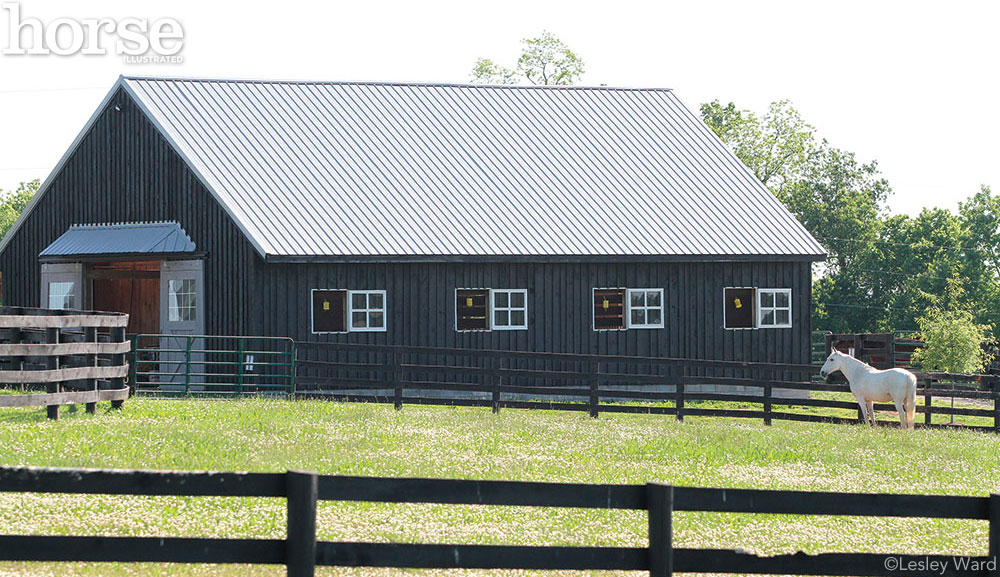
Whether you’ve decided to keep your new horse at a boarding barn or at home on your farm, it’s important to take a close look at where you’re going to keep him to make sure that his new residence is a safe place. Horses have a knack for getting into scrapes and hurting themselves, so it’s essential that you reduce the risk of injury by providing a hazard-free environment for your new mount. This doesn’t mean you have to board your horse at the fanciest facility or invest in an expensive new barn on your property; you just have to know what dangers to look out for before settling your horse into his new stall or turning him out in his pasture.
Pasture Hazards
Walk around the pasture and check the fencing. Are boards broken? Are nails sticking out of posts? Is electric tape flying loosely in the wind? These are problems that need to be fixed before you turn out your precious horse. If the pasture is near a road, check that no trash—like glass bottles or aluminum cans—is hidden in the grass. Old machinery or other junk shouldn’t be stored in the pasture either. Horses are curious creatures and will investigate interesting objects. It won’t be long before you’re calling the vet out to stitch up a wound caused by a rusty tractor or trailer.
Make sure all gates open and shut smoothly. It’s easy to get stepped on when you’re dragging open a heavy gate while leading an impatient horse who is eager for his dinner. The gateways should also be large enough to let you and your horse through safely.
There should be plenty of room in the pasture for all of the horses. They must have space to be able to escape harassment from other horses. And they should never wear all-nylon halters while turned out, which can get caught on things like branches or fence posts. If a horse panics while wearing a nylon halter, he could get injured as he struggles to free himself. It’s best to turn out your horse without a halter, but if he’s difficult to catch, let him wear a leather halter or a halter with a leather breakaway crownpiece.
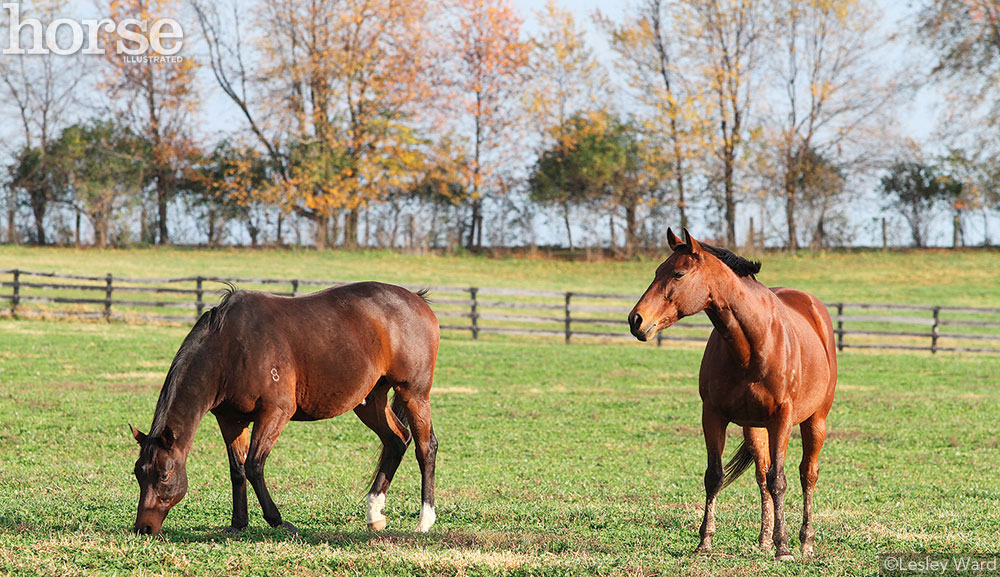
Pastures should be clear of debris and large enough for all of the horses in it to have space to roam and graze.
Pipe Corral Dangers
If your horse is going to be kept in a pipe corral, walk around it to make sure there are no broken pipes with jagged edges that could tear his skin.
Look out for sharp bolts on the edges of the corral hardware. These should be covered or filed down so they can’t injure your horse. Look for spots where your horse’s hooves could get stuck and cover up these areas with boards. Check his feeder for sharp edges too.
The corral should have some sort of shade to keep your horse cool in the summer sun. Make sure the roof of the shelter is high enough that your horse won’t whack himself if he throws his head up or rears (10 to 12 feet is usually fine).
Barn Safety
Whether you’re boarding your horse or keeping him at home, the barn area should be tidy. Junk and clutter in horse-handling areas can cause accidents. Stall-cleaning equipment like shovels and pitchforks should be hung on a wall well away from horses, or be stored in a safe area. Wheelbarrows should be kept outside the barn or in a secure location where a horse can’t run into them and tip them over. Buckets should be stacked away from horsey hooves. Hoses should be neatly coiled on the ground or hung on a hose holder on the wall.
The barn aisle should be at least 8 to 10 feet wide to give horse and handler room to turn around easily, or so two horses can pass each other safely. The floor of the barn should provide non-slip footing. Textured concrete, asphalt or packed crushed limestone on top of dirt are safe, inexpensive options. If you can afford them, interlocking textured rubber mats or pavers (similar to rubber bricks) are a barn owner’s dream.
Avoid hammering nails or pointy metal hooks into the aisle wall to hang halters or bridles because a horse could scratch himself or gouge out an eye. Use a rounded bridle bracket or make low-cost halter holders by cutting a spare 5-inch round fence pole into 2-inch sections (slices) and screw them to the wall.
A good boarding barn should have a separate grooming area where you can safely tie your horse out of the way of other horses and people.
All feed and grain should be kept in a room with a secure door so horses can’t wander in and help themselves. Overeating grain can result in dangerous, potentially deadly health problems like laminitis and colic, and you could end up with a huge bill from the veterinarian. If there isn’t a separate feed room in the barn, use an empty stall with a latch. If you don’t have an extra stall, make sure feed containers are secured with bungee cords or have latches or locks. They should also be rodent- and critter-proof. Raccoons and opossums are frequent visitors to barns where feed is not stored securely. Raccoons are aggressive creatures that can make a big mess in the barn, and opossums can transmit infectious diseases like equine protozoal myeloencephalitis (EPM) to horses. And if you see lots of mice or rats scurrying around your barn, it might be time to adopt a barn cat or two from the local humane society.
Ideally, hay storage should be in another building, away from the barn. But if you’re like most barn owners, your hay will be in a loft, a spare stall or in an open space in the barn. It should at least be a dry, well-ventilated area to prevent mold from forming. Stack the bales off the ground on pallets to prevent them from getting wet. Remember that storing hay near a horse’s stall produces dust that can cause coughs and aggravate respiratory ailments.
The barn should have several working fire extinguishers, and they should be hung in a place where they are easy to grab. Check the fire extinguishers to make sure they are full and keep them up to date. Many barn fires are electrical, so don’t overuse extension cords, and keep switches and outlets far from mouthy horses. Always unplug electrical items when not in use and avoid using space heaters—they are easy to forget about when you leave the barn and can be tipped over easily. If possible, cover outlets that are in the barn aisle or near doors that lead to the outside so their wiring doesn’t get wet or dusty. Also make sure wiring is covered in metal conduit so rodents can’t chew through it. If you’re buying a farm with an older barn, it’s a smart idea to have a licensed electrician inspect the wiring and fix anything that looks dangerous.
Keep the barn clean of dust, shavings, cobwebs and other materials that could start or encourage the spread of a fire. Post “No Smoking” signs prominently, and make sure aisles and exits are kept clear in case you need to evacuate.
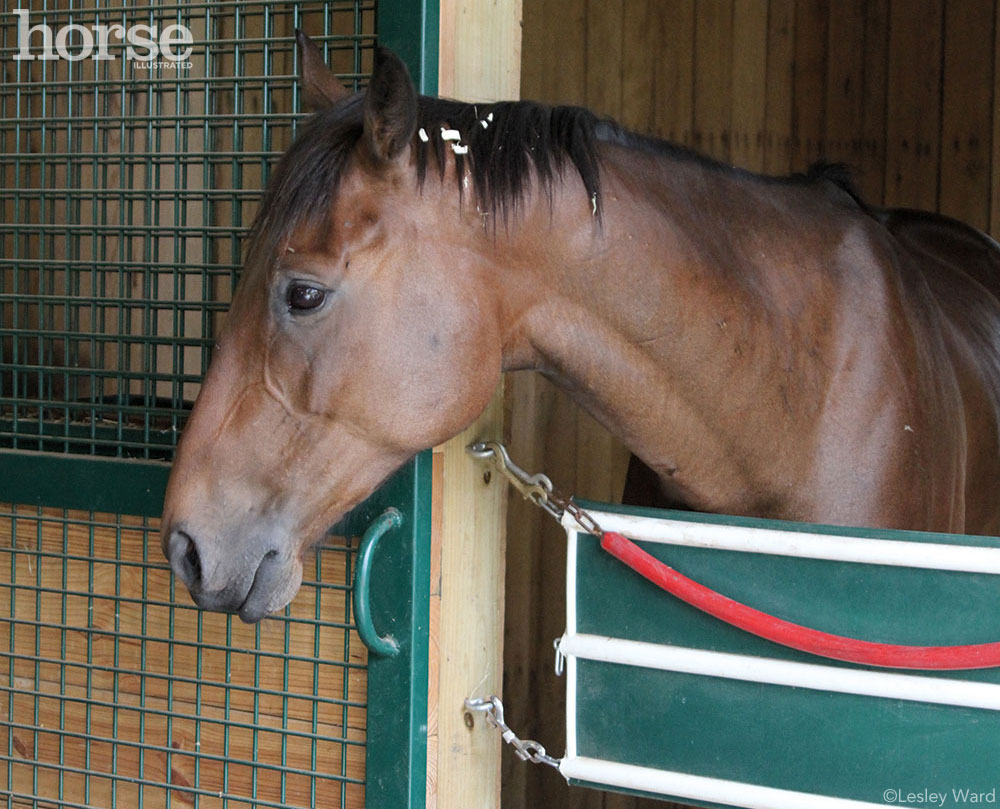
If you plan to use a stall guard, check that the screw eyes attaching it to the door frame are secure.
A Secure Stall
Your horse’s stall should be a safe haven where he feels happy and secure. It needs to be at least 12’x12′ to give him plenty of room to turn around and lie down safely. The ceiling or trusses should be around 10 to 12 feet high so your horse can’t hit his head on them. Make sure overhead lights are out of your horse’s reach, with bulbs encased by a wire cage over a glass cover.
The stall door design and placement should make leading a horse in and out of the stall easy. Most stall doors are 4 feet wide. If it’s a sliding door, it should have a stop to prevent it from opening too far and falling off the track. All doors must have a secure latch that an escape artist can’t open. If you plan to use a stall guard, make sure the screw eyes attaching it to the wall or door frame are secure.
Good ventilation is essential. If the stall has a window, cover it with safety bars or wire mesh so your horse can’t break the glass.
The stall’s partition needs to be at least 8 feet high. (Did you know a horse can kick as high as 7 feet?) It doesn’t need a solid wall to the ceiling—some stalls have bars. If yours has bars separating your horse from his neighbor, they should be no more than 3 inches apart to prevent a flying hoof from getting stuck. Most horses are content with the company of the horse next door, but if your horse hates his neighbor and constantly kicks the wall or behaves aggressively, it’s best to find him another stall.
The stall walls should be made of solid, sturdy wood. If you see loose or missing boards, fix or replace them immediately. It only takes a second for a horse to kick out and get his leg stuck in a gap in the wall. Grab a hammer and pound in any loose nails you spot. You can add rubber mats to the walls if your horse tends to kick.
Your horse will need a feeder with rounded edges or a bucket for feed, as well as a water bucket or automatic waterer. Buckets should be hung on the wall with safe hooks (a rounded eye hook and a double-ended snap is your best bet), not left on the floor where they can be tipped over. They should also be positioned just above the horse’s chest, around nose level.
If there is a hay rack in the stall, make sure it has rounded edges and is hung at wither height so your horse can’t get a leg caught in it. If you plan to use a hay net, it should also be hung at wither height. If you hang it too high, dust will fall in your horse’s eyes and nose; if you hang it too low, he could get a leg stuck in it and panic.
The stall’s floor should be level and non-slip. Many stall floors consist of a layer of packed crushed limestone on top of dirt. If you decide to use rubber stall mats, make sure they fit the stall perfectly and don’t shift. The stall should always have sufficient bedding to absorb moisture and keep your horse comfortable. If you have too little bedding in the stall, your horse could get nasty sores on his hocks when he lies down and gets back up.
No matter what kind of bedding you use, it’s essential that you keep the stall clean, and this means mucking out every day if your horse is kept inside for any amount of time. A urine-filled stall will produce ammonia fumes that can irritate your horse’s respiratory system.
Around the Barn
Equipment like tractors, pasture drags, disc harrows and manure spreaders should be kept away from horses. A spooked horse running loose could get a foot caught in a drag or slashed by the sharp blade of a harrow.
Storing farm equipment in a lean-to with a gate or in a separate shed is a sensible idea. A hot motor, gas and other flammable materials present a fire hazard in a barn. And never leave a tractor or mower idling out in a field with horses. It won’t take long before the herd investigates the fascinating shiny object, and a horse could get injured.
Always Put Your Horse’s Safety First
If your horse is going to live at home, it’s nice to be able to quickly fix things yourself. It can a bit trickier when you board your horse. If you see something that needs to be repaired, don’t hesitate to let the barn owner or manager know about it, and remind them again and again if the task hasn’t been completed in a timely fashion. Don’t be shy; your horse’s well-being is at stake, and it’s the barn owner’s responsibility to provide a safe environment for him.
This article originally appeared in the 2014 edition of Your New Horse.



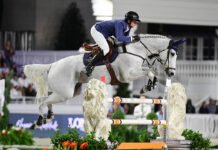

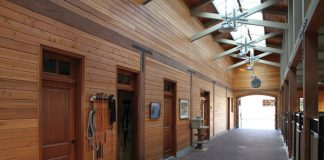

You got my attention when you said that your horse’s storage or house must be a dry, well-ventilated area in order to prevent mold from forming. My father will surely appreciate this tip since he wanted to care for horses and have a horse arena and house installed on his farm. One of his goals is to keep all the horses safe and free from anything that could cause them harm. I will share this with him as I heard that he would want a metal shelter.